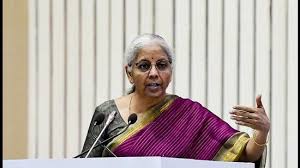Fintechs should see agri, rural areas as new markets, not just social responsibility: FM Nirmala Sitharaman

Finance Minister Nirmala Sitharaman has sent a powerful message to India’s booming fintech sector: look beyond urban markets. The real opportunity, she said, lies in Bharat—India’s vast rural and agricultural landscape—not merely as a target for social welfare, but as a vibrant, untapped business frontier.
At a fintech event on June 18, 2025, the Finance Minister made a clear pitch to the industry: rural India must not be viewed solely through the lens of corporate social responsibility (CSR) or Environmental, Social, and Governance (ESG) obligations. Instead, it should be approached as a fertile ground for innovation, investment, and inclusive growth.
“See Bharat as a Market, Not a Mission”
Highlighting how fintechs have revolutionized urban payments and lending, Sitharaman urged companies to extend their vision.
“Fintechs must see Bharat—not just India—as the market,” she said. “The rural and agricultural segments have immense potential for growth, and serving them is not charity. It is business.”
This shift in narrative is significant. For years, fintechs have largely focused on urban consumers, catering to digitally savvy populations with credit cards, instant loans, investment platforms, and UPI-based apps. Meanwhile, rural India—home to nearly 65% of the population—has remained underserved despite the growing digital infrastructure.
A Case for Rural Fintech Expansion
Sitharaman’s call aligns with the government’s long-standing vision of “Digital India” and financial inclusion. Her statement isn’t just philosophical—it’s backed by data and policy trends.
- As of 2024, over 50 crore Jan Dhan accounts have been opened, enabling the poorest Indians to access formal banking.
- UPI transactions in rural districts are rising sharply, thanks to the increasing penetration of smartphones and mobile internet.
- The Kisan Credit Card (KCC) scheme has provided working capital to over 7 crore farmers, but the formal agri-lending market is still full of gaps.
This creates a ripe opportunity for fintech players to innovate and step in. Whether it’s agri-insurance platforms, digital wallets tailored for farmers, AI-based crop advisory, or micro-lending tools, the potential for growth is enormous.
Digital Infrastructure Already in Place
One of the biggest enablers for fintech growth in rural areas is India’s expanding Digital Public Infrastructure (DPI). This includes:
- Aadhaar-based e-KYC, which simplifies onboarding.
- UPI, which supports real-time payments, even in remote villages.
- DigiLocker, enabling secure access to documents.
- The upcoming ‘Agri Stack’, a government-backed digital database aimed at improving farmer welfare through technology.
Sitharaman stressed that with the right intent and solutions, fintechs can scale quickly in rural regions using this infrastructure.
Beyond Payments: Credit, Insurance, and AgriTech
While UPI adoption has skyrocketed, the real fintech revolution in rural India lies in expanding access to credit and insurance.
Traditional banks often struggle to serve remote areas efficiently, leading to high reliance on informal credit—often at exploitative interest rates. Fintechs can disrupt this cycle by using alternative data for credit scoring—like mobile usage, repayment of utility bills, or even satellite imagery for crop yields.
Similarly, climate risks and market volatility continue to affect farmers. Customizable, tech-driven micro-insurance products could protect against these uncertainties. Platforms offering dynamic pricing models, real-time claim settlements, and mobile-based weather alerts can bring transformative change.
Cybersecurity and Consumer Trust Must Follow
FM Sitharaman also issued a caution: as fintechs expand into new markets, they must be vigilant about cybersecurity threats, including phishing scams, identity theft, and deepfake fraud.
“You are handling data and money—two of the most sensitive elements in the economy. The trust of first-time digital users, especially in rural areas, must be preserved at all costs,” she warned.
As fintechs eye the next billion users, building trust through security, transparency, and financial literacy will be key. Rural consumers may be unfamiliar with complex apps or technical jargon. Simplified interfaces in regional languages, customer care in local dialects, and fraud prevention measures will be essential.
From Social Good to Strategic Business
The narrative around fintechs serving rural India has often been one of “doing good.” Sitharaman’s speech changes the paradigm—this is not merely about altruism or compliance with CSR rules. It’s about recognizing rural India as a growth engine for the fintech economy.
By entering these new markets, startups can tap into millions of customers, build scalable models, and even reduce urban market saturation risks. Government support—through regulatory sandboxes, rural fintech accelerators, and funding schemes—is already paving the way.
Conclusion: The Future of Fintech Lies in the Fields
Nirmala Sitharaman’s statement is not just a policy signal—it’s a business roadmap. As India grows digitally, fintech players must look beyond metro cities. The next phase of growth, innovation, and impact lies in villages, farms, and small towns.
Those who invest early in rural fintech ecosystems—with strong security, inclusion strategies, and vernacular accessibility—stand to gain the most. Because in the future of India’s digital economy, rural is not a responsibility. It’s the opportunity.






